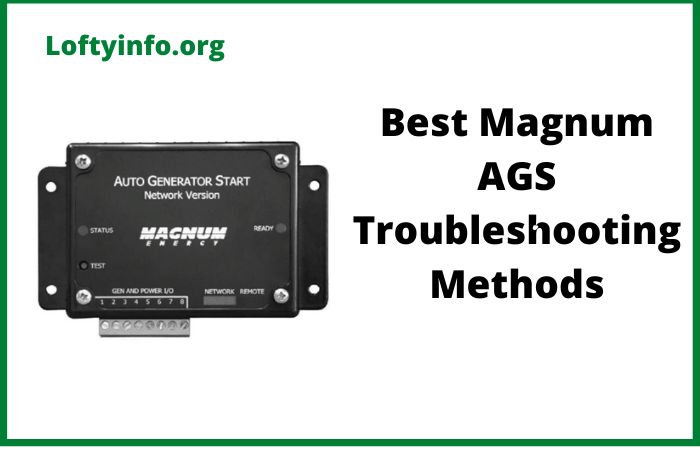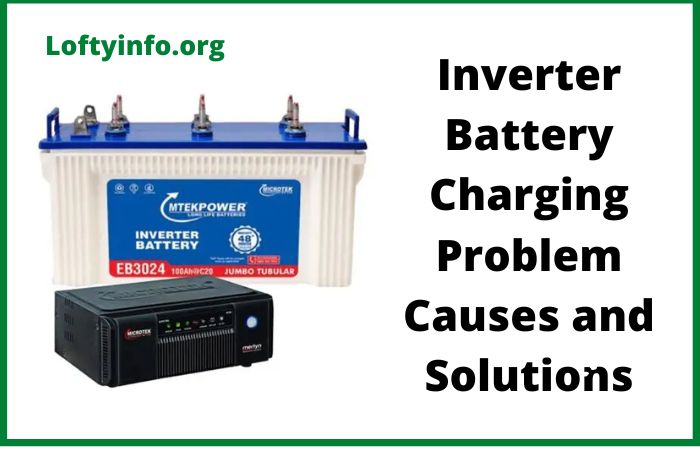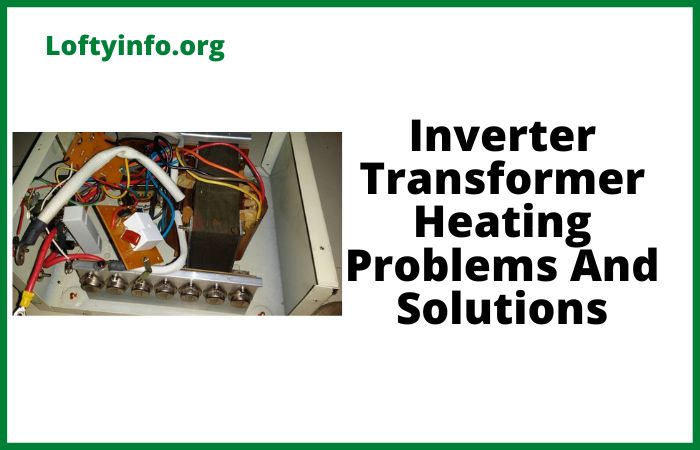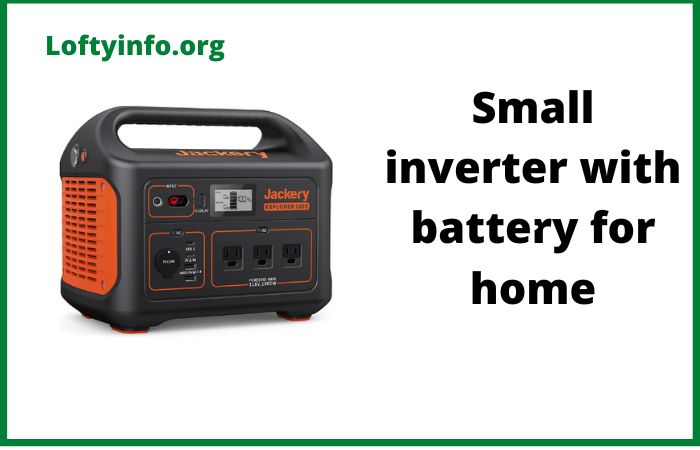Magnum AGS Troubleshooting: Methods for Best Fix
Auto Generator Start (AGS) systems are crucial components in modern power management and Magnum Energy’s AGS controllers are among the most reliable in the industry.
Just like any electronic system, Magnum AGS units can experience issues that require systematic troubleshooting.
This comprehensive guide provides eight detailed troubleshooting methods to help you diagnose and resolve common Magnum AGS problems effectively.
Understanding Magnum AGS Systems Before Troubleshooting
Before diving into troubleshooting methods, it’s essential to understand how Magnum AGS systems work.
These controllers automatically start and stop generators based on battery voltage, load demand, time schedules or manual commands.
The system monitors multiple parameters including battery state of charge, AC load requirements and environmental conditions to make intelligent decisions about generator operation.
Magnum AGS Troubleshooting Methods for Best Fix
Method 1: Battery Voltage and Connection Analysis
Why Battery Issues Are Critical for AGS Operation
The most common cause of Magnum AGS malfunctions stems from battery-related problems.
The AGS system relies heavily on accurate battery voltage readings to determine when generator starting is necessary.
Step-by-Step Battery Troubleshooting Process
Voltage Measurement Procedure: Start by measuring the battery bank voltage directly at the battery terminals using a quality digital multimeter.
Compare this reading with the voltage displayed on your Magnum AGS controller.
A discrepancy of more than 0.2 volts indicates potential wiring issues or controller calibration problems.
Connection Inspection Protocol: Examine all battery connections for corrosion, looseness or damage.
Pay particular attention to the AGS sense wires, which are typically smaller gauge wires that provide voltage feedback to the controller.
These connections are often overlooked but are critical for proper AGS operation.
Load Testing Implementation: Perform a load test on your battery bank to ensure it can maintain proper voltage under typical operating conditions.
A battery bank that shows acceptable voltage at rest but drops significantly under load will cause the AGS to cycle unnecessarily.
Method 2: Generator Start Circuit Diagnostics
Understanding Start Circuit Components
The generator start circuit is the pathway through which the AGS controller sends the start signal to your generator.
This circuit typically includes relays, contactors and various safety interlocks.
Comprehensive Start Circuit Testing
Signal Path Verification: Begin by checking whether the AGS controller is sending a start signal.
Most Magnum AGS units have LED indicators or display messages that show when a start command is active.
If the controller shows it’s sending a start signal but the generator doesn’t respond, the problem lies in the external start circuit.
Relay and Contactor Inspection: Test each relay and contactor in the start circuit using a multimeter.
Check for proper coil resistance, contact continuity when energized and ensure contacts open completely when de-energized.
A partially stuck relay contact can cause intermittent starting issues or prevent proper shutdown.
Safety Interlock Analysis: Many installations include safety interlocks such as low oil pressure switches, high temperature switches or manual stop switches.
Verify that all safety interlocks are functioning correctly and not preventing generator starts.
These switches can fail in ways that aren’t immediately obvious.
Method 3: AC Load Monitoring and Calibration
The Role of AC Load Detection in AGS Operation
Magnum AGS systems can be configured to start generators based on AC load demand.
When this feature isn’t working correctly, the generator may not start when needed or may start unnecessarily.
AC Load Monitoring Troubleshooting Steps
Current Transformer (CT) Inspection: If your system uses current transformers to monitor AC loads, inspect these devices for proper installation and connection.
CTs must be installed with correct polarity and on the appropriate conductors.
A reversed CT will provide incorrect load readings to the AGS controller.
Load Threshold Configuration: Review the AGS programming to ensure load start thresholds are set appropriately for your system.
If the threshold is set too high, the generator won’t start when moderate loads are applied.
If set too low, the generator may start for minor loads that could be handled by the inverter.
Wiring Verification Process: Check all AC monitoring wiring for proper connections and continuity.
Pay special attention to neutral and ground connections, as improper grounding can cause erratic load readings and unpredictable AGS behavior.
Method 4: Programming and Configuration Verification
Common Programming Errors That Cause AGS Problems
Incorrect programming is a frequent source of Magnum AGS issues, particularly after initial installation or system modifications.
Systematic Programming Review Process
Parameter Documentation and Review: Create a comprehensive list of your current AGS programming parameters and compare them with your system requirements.
Common programming errors include incorrect voltage start/stop thresholds, improper time delays and conflicting operating modes.
Operating Mode Conflicts: Magnum AGS controllers offer multiple operating modes that can sometimes conflict with each other.
For example, having both voltage-based and load-based starting enabled simultaneously can cause unexpected behavior.
Review each enabled feature to ensure they work harmoniously together.
Time and Date Synchronization: If your AGS system uses scheduled starts or time-based functions, verify that the internal clock is accurate.
An incorrect time setting can cause scheduled events to occur at unexpected times or not at all.
Method 5: Sensor and Input Device Testing
Critical Sensors in Magnum AGS Systems
Various sensors and input devices provide information that the AGS controller uses to make starting decisions.
Faulty sensors can cause erratic or incorrect AGS operation.
Comprehensive Sensor Testing Protocol
Temperature Sensor Verification: Many AGS installations include temperature sensors for both ambient and generator monitoring.
Magnum RV Inverter Troubleshooting For Common Problems
Test these sensors by comparing their readings with known accurate temperature measurements.
Temperature sensors can drift over time, leading to incorrect start decisions based on temperature thresholds.
Remote Start Input Testing: If your system includes remote start capabilities through dry contacts or other input devices, test these inputs systematically.
Use a multimeter to verify that contacts close and open properly and that the AGS controller recognizes these input changes correctly.
Auxiliary Input Analysis: Some installations use auxiliary inputs for custom starting conditions such as propane tank level, water pump operation or other system-specific requirements.
Verify that these inputs are providing accurate signals to the AGS controller.
Method 6: Communication and Network Troubleshooting
Understanding Magnum AGS Communication Systems
Modern Magnum AGS controllers often communicate with other system components through various communication protocols including RS-485, CAN bus or proprietary networks.
Network Communication Diagnostics
Cable and Connector Inspection: Communication problems often stem from damaged or improperly connected communication cables.
Inspect all communication wiring for damage, proper termination and correct pinout assignments.
Pay particular attention to twisted pair cables, which must maintain their twist to prevent interference.
Network Termination Verification: Many communication networks require proper termination resistors at each end of the network.
Missing or incorrect termination can cause communication errors, data corruption or complete communication failure.
Use a multimeter to verify termination resistance values.
Signal Quality Testing: If you have access to an oscilloscope or communication analyzer, examine the quality of communication signals.
Poor signal quality can cause intermittent communication problems that are difficult to diagnose without proper test equipment.
Method 7: Environmental and Installation Factor Assessment
How Environmental Conditions Affect AGS Performance
Environmental factors such as temperature extremes, humidity, vibration and electromagnetic interference can significantly impact Magnum AGS operation.
Environmental Troubleshooting Methodology
Temperature Impact Analysis: Extreme temperatures can affect both the AGS controller and connected components.
Cold temperatures can cause LCD displays to become sluggish or unreadable while high temperatures can cause electronic components to malfunction or fail prematurely.
Verify that the installation environment stays within manufacturer specifications.
Vibration and Mounting Assessment: Excessive vibration from generators or other sources can cause connection problems and component failures.
Inspect all mounting hardware and ensure the AGS controller is securely mounted with appropriate vibration isolation if necessary.
Electromagnetic Interference Investigation: AGS controllers can be susceptible to electromagnetic interference from generators, inverters, radio transmitters and other electronic devices.
If you suspect EMI problems, try temporarily relocating the AGS controller away from potential interference sources to see if operation improves.
Method 8: Advanced Diagnostic Tools and Logging Analysis
Utilizing Built-in Diagnostic Features
Magnum AGS controllers include various diagnostic features that can provide valuable troubleshooting information when properly utilized.
Advanced Diagnostic Procedures
Error Code Analysis: Most Magnum AGS controllers maintain error logs that record fault conditions and system events.
Access these logs and analyze any recorded errors systematically.
Each error code has specific meaning and can point directly to the source of problems.
Historical Data Review: Many controllers store historical data about system operation including start attempts, run times and operating conditions.
Review this data to identify patterns that might indicate developing problems or configuration issues.
Real-Time Monitoring Implementation: Use the real-time monitoring capabilities of your AGS controller to observe system behavior during problem conditions.
Watch for parameter changes that occur just before problems manifest, as these can provide important clues about root causes.
Preventive Maintenance for Long-Term AGS Reliability
Essential Maintenance Tasks
Regular maintenance can prevent many AGS problems before they occur.
Establish a routine maintenance schedule that includes:
Monthly Inspections: Check all connections for tightness and corrosion, verify display readings against actual measurements and test the generator start sequence manually.
Quarterly Reviews: Update programming parameters if system requirements have changed, review and clear diagnostic logs and perform comprehensive system testing under various load conditions.
Annual Maintenance: Replace batteries in remote controls and sensors, update firmware if available and perform complete system documentation review.
When to Seek Professional Help
While many Magnum AGS problems can be resolved using these troubleshooting methods, some issues require professional expertise.
Consider contacting a qualified technician when:
- Multiple troubleshooting methods don’t resolve the issue
- Problems involve complex communication networks
- Safety-critical components may be involved
- Warranty considerations are important
Conclusion: Mastering Magnum AGS Troubleshooting
Effective Magnum AGS troubleshooting requires a systematic approach combined with understanding of how these systems operate.
By following these eight detailed methods, you can diagnose and resolve most common AGS problems efficiently.
Remember that successful troubleshooting often requires patience and methodical testing rather than jumping to conclusions based on symptoms alone.
Regular maintenance and proper installation practices will minimize the need for troubleshooting but when problems do occur, these methods provide a comprehensive framework for resolution.
Keep detailed records of your troubleshooting efforts and solutions, as this information will prove valuable for future problem resolution and system optimization.
This magnum AGS troubleshooting will help provide a great fix to common Magnum inverter problems.
Causes of fire hazards on roof top solar panels
Complete 146 john deere loader specs
Magnum dimensions csw1012 troubleshooting
Magnum ms2012 inverter troubleshooting






